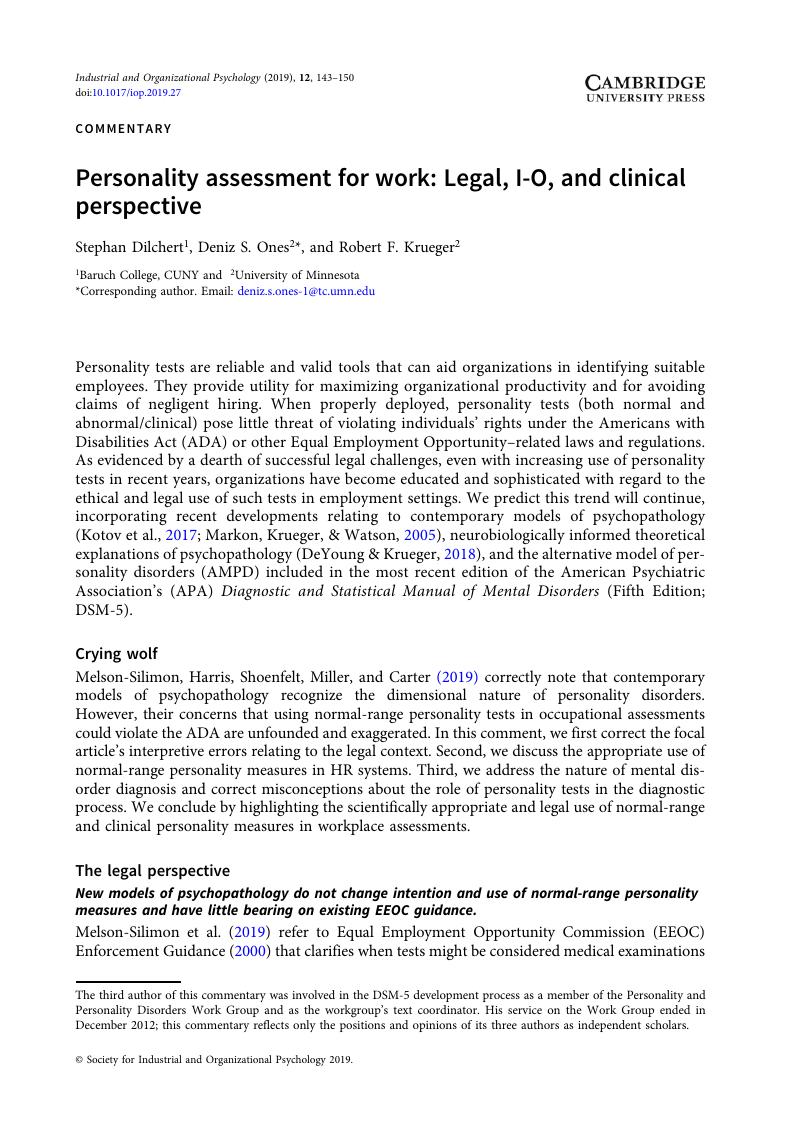Crossref Citations
This article has been cited by the following publications. This list is generated based on data provided by Crossref.
Heimann, Anna Luca
Ingold, Pia V.
Debus, Maike E.
and
Kleinmann, Martin
2021.
Who will go the extra mile? Selecting organizational citizens with a personality-based structured job interview.
Journal of Business and Psychology,
Vol. 36,
Issue. 6,
p.
985.
Olivier, Karina
Barnard, Antoni
and
van Niekerk, Annelize
2021.
Selection of industrial and organisational psychology master’s students: Exploring the predictive validity of a person–job fit approach.
SA Journal of Human Resource Management,
Vol. 19,
Issue. ,
Manocha, Richa
Duggal, Taranjeet
and
Rana, Neeti
2022.
Exploring DSS for Personality Assessment.
International Journal of Human Capital and Information Technology Professionals,
Vol. 13,
Issue. 1,
p.
1.



